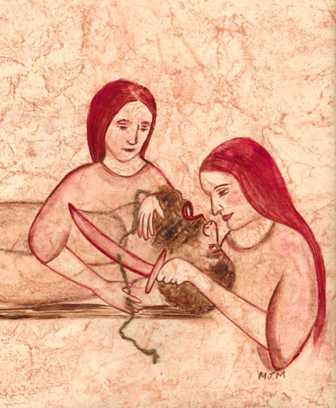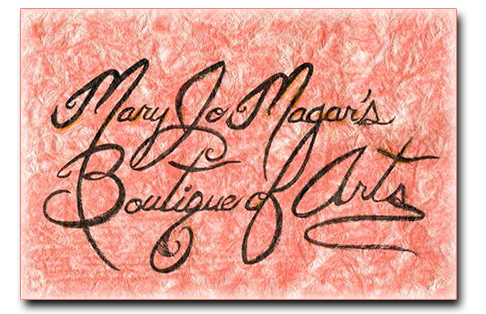
“The New Judith, Healing Holofernes:
The Sword Now Cuts the Thread”
painted on ceramic tile handmade in Israel. The “paint,” with gum arabic, is a mixture of corn (starch), wine, olive oil, and fig (paste), which are some of the foods that Judith brought with her when she left Bethulia to go to the camp of Holofernes.
The story of Judith has long been an inspiration to artists worldwide. Some of history’s most beautiful artworks depict Judith’s beheading of Holofernes.
Two paintings in particular are my favorites: “Judith” by Vicenzo Catena, 1520, and “Judith with the Head of Holofernes” by Cristofano Allori, 1613. I like both these paintings for the same reason: the act has already been committed, and each Judith looks intensely into the eyes of the painting’s beholder as though to say, “There, you see, it had to be done, it is done, and I did it.”
One hopes that as human beings and their civilization evolves, such acts as Judith had to perform become unnecessary – but perhaps not. In any case, I have rewritten (with editing) the story of Judith as I should like to imagine it today:
. . . And it came to pass when Judith had ceased to cry to the Lord, that she rose from the place wherein she lay prostrate before the Lord, for the Lord now told Judith that she was One with Him and not subservient. And she called her friend, no longer her maid, because her friend was now One also and not subservient to Judith. And going into her house, Judith took off her haircloth and put away the garments of her widowhood, and she washed her body and anointed herself with unscented, unfiltered oil and left loose the hair of her head and clothed herself in plain garments of gladness, and put sandals on her feet and took her bracelets, and lilies, and earlets, and put them aside, to leave, because they were no longer purposeful or desired. And the Lord saw no need to give her more beauty because Judith was beautiful in herself; dressing was no longer necessary to the definition or appearance of beauty, for Judith knew that beauty was the spiritual reflection of the Lord and the physical reflection of nature. And Judith and her friend took a bottle of wine to carry, and a vessel of oil, and parched corn, and dry figs, and bread and cheese, and went out. . . . And after the act was committed, the Angel of Time suddenly appeared, and in that moment, centuries passed and merged because the Lord and His souls are without the physical laws of time and space, and Judith found herself in a new era, a golden age, within the twenty-first century, and the Lord no longer had to command her because she knew His thoughts as her own. She made a needle, and using the flesh of a slain once-enemy of Holofernes, who was no longer an enemy, she made a thread of this living tissue and proceeded to sew the head of Holofernes back onto his body, knowing that Holofernes was to have life again so that he could rectify his own errors within humanity’s errors and thus be forgiven, by himself, by others, and by the Lord; thus Judith too could then be forgiven by Holofernes. . . .
